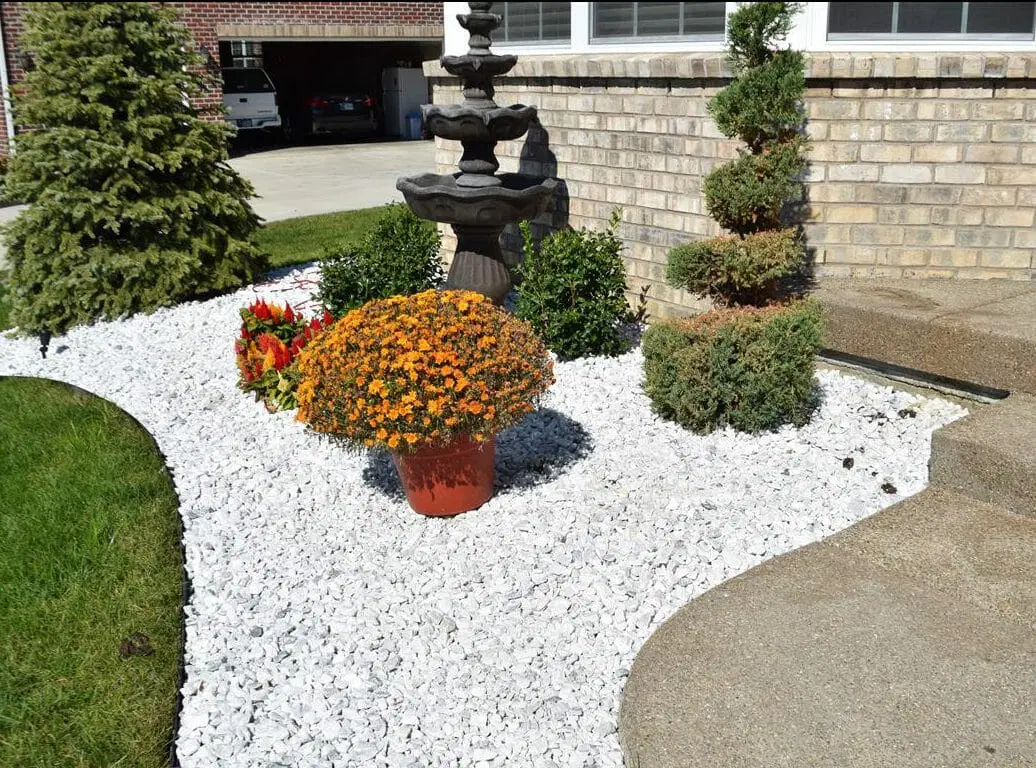White rocks can transform your garden, giving it a clean, bright, and uplifting feel. Whether modern or traditional, white rocks work with any garden style. They are highly versatile and can be used in many creative ways.
In this comprehensive guide, we’ll explore how white rocks can enhance your garden’s design. We’ll cover:
- Benefits of using white rocks
- Types of white rocks for gardens
- Creative white rock landscaping ideas
- Tips for choosing and arranging white rocks
Why Use White Rocks in Your Garden Landscaping?
White rocks offer numerous benefits for gardeners:
Aesthetic Appeal
White rocks instantly brighten up any garden. They create a clean, spacious look and work with all styles from Zen to contemporary. White rocks look particularly striking against green foliage or colorful flowers.
Reflects Light
White rocks reflect sunlight, helping to illuminate shady areas of your garden. This allows you to grow plants that need more light.
Cooling Effect
White rocks have a cooling visual effect, perfect for hot climates. They can lower the garden’s temperature.
Low Maintenance
White landscaping rocks are easy care. They don’t require watering, pruning or mowing like lawns. A white rock garden is low maintenance yet high visual impact.
Good Drainage
White rocks allow rainfall and watering to drain quickly, preventing soggy soil. This is great for drought-tolerant planting.
Weed Barrier
A thick layer of white rocks acts as an effective mulch and weed barrier. It prevents weeds from sprouting and taking over.
Versatility
White rocks are incredibly versatile. They can be used for walkways, as accent features and focal points, for drainage, and to decorate plant containers.
Durability
Rocks are highly durable and long-lasting in outdoor environments. They can withstand all weather conditions.
Popular Types of White Landscaping Rocks
There are many options when choosing white rocks for your garden, from pebbles to boulders. Consider size, shape and texture. Here are some popular types:
White Pea Gravel
Small, smooth white pebbles that create a uniform look. They are affordable and suitable for covering large areas.
Marble Chips
Irregularly sized and shaped marble chips that provide visual interest. The natural swirls and veins add depth.
Tumbled Stone
Tumbled stones have softened edges thanks to machine tumbling. These create a relaxed, natural style.
Crushed Granite
Crushed granite comes in white or light gray. The small pieces create interesting textures for modern designs.
River Rock
Naturally smooth river rocks have an organic shape. They come in white and light tones.
Mexican Beach Pebbles
These smoothly shaped pebbles have natural variation. They add warmth and work well in cottage gardens.
White Boulders
For structural landscaping, large white boulders make striking features. Their hefty presence grounds the space.
28 Creative White Rock Landscaping Ideas
Now let’s look at innovative ways to use white rocks in your garden’s design.
1. Modern White Pebble Courtyard
Create a serene modern space with a courtyard paved in white pebbles. Add planters at varying heights for interest.
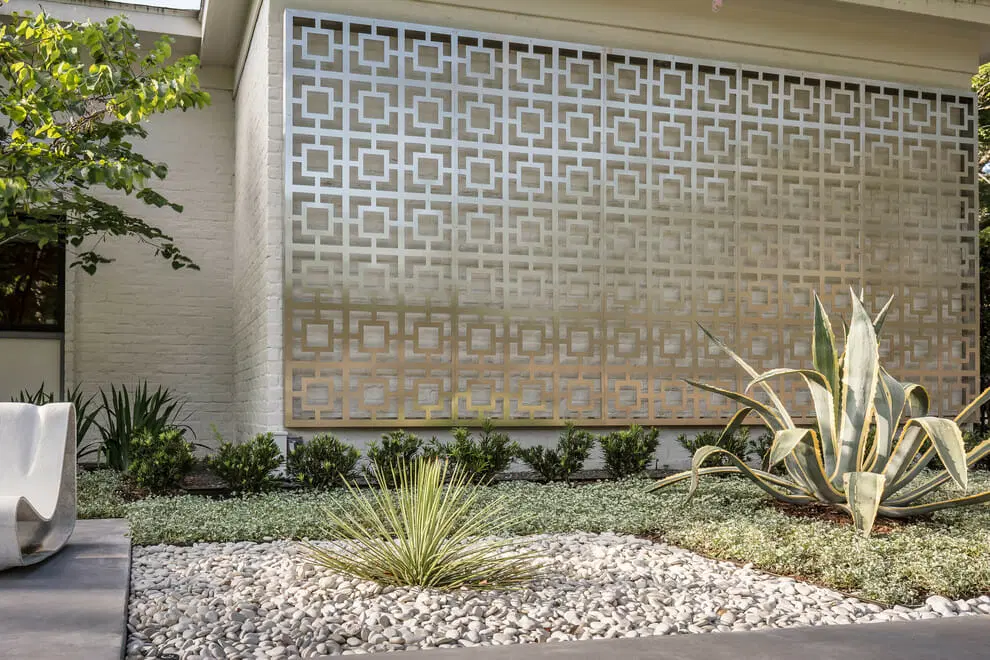
2. White Rock Garden Path
Use white pebbles or gravel to create a path through your garden. It defines the route and looks clean and crisp.
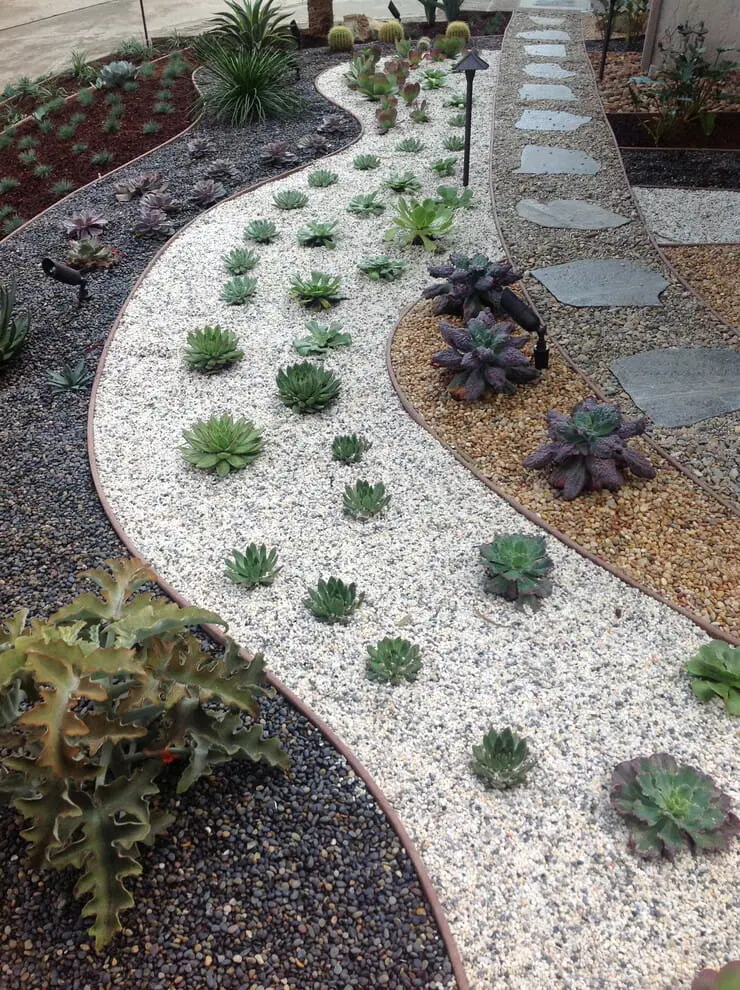
3. White Rock Steps
Make steps more defined by filling the edges with white pebbles. This creates a smart modern look.

4. Zen Garden Style
White pebble gardens with boulders evoke classic Zen garden style. Keep the look minimalist and use raked patterns.
5. White Walkway with Pots
Line a white pebble walkway with planters. Choose pots in natural materials like wood, stone or concrete.
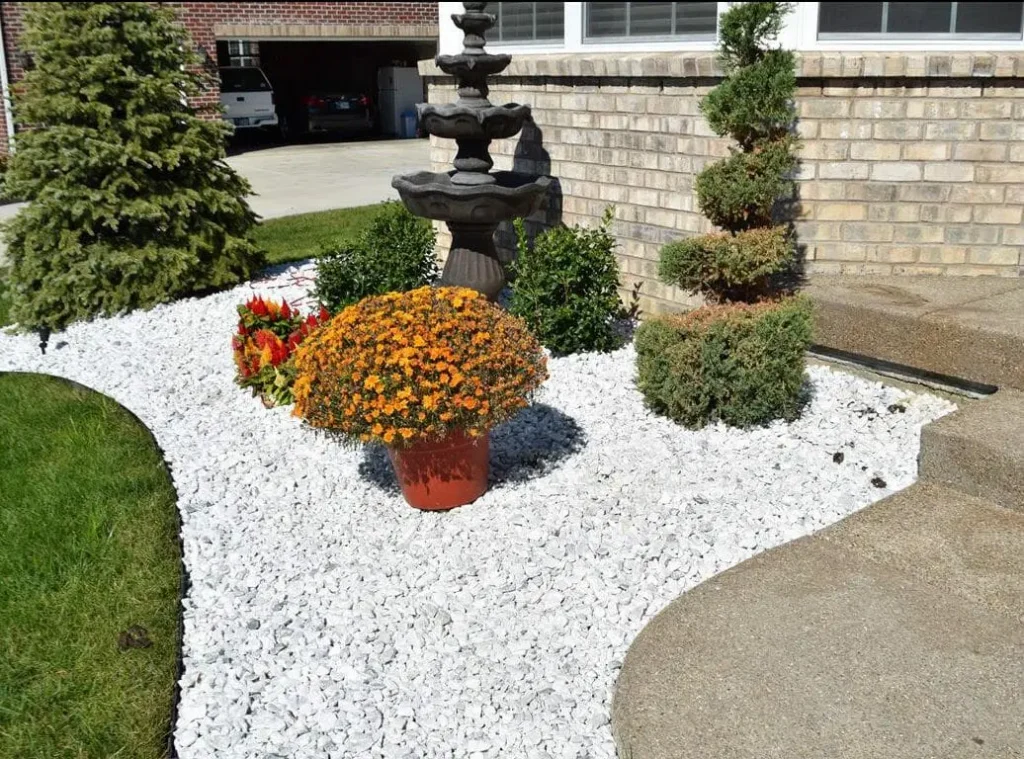
6. White Pebble Edging
Use white pebbles as edging around planting beds. This keeps the shape defined and adds subtle color.
7. White Gravel Drainage
In wet areas use white gravel to improve drainage. Surround moisture loving plants for healthy roots.
8. Textured Pathway
For the path, combine white pebbles with stone pavers. This adds visual interest with varied textures.
9. White Boulder Water Feature
Place large white boulders around a water feature. This grounds the space and complements flowing water.
10. Tropical White Courtyard
Tropical plants like palms pop against a white pebble courtyard. Add modern pots for an urban look.
11. White and Wood Deck
Pair a white pebble patio with a wood deck to define spaces while repeating natural tones.
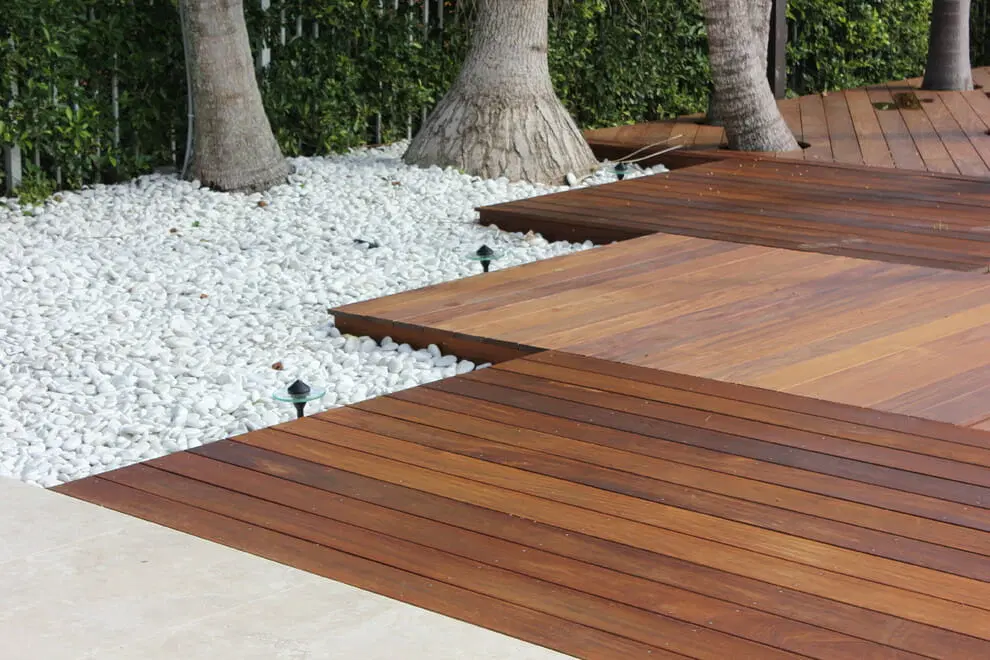
12. White Fire Pit Area
Use white rocks to create a fire pit seating area. This extends your living space outdoors.
13. Gravel Play Area
Designate a child’s play space with soft white pebbles. Boulders and logs create a natural setting.
14. White Rock Pool Area
Surround an oval pool with white gravel and boulders. The tones complement blue water.
15. White Boulder Retaining Wall
Use stacked white boulders as garden edging or to make retaining walls for height.
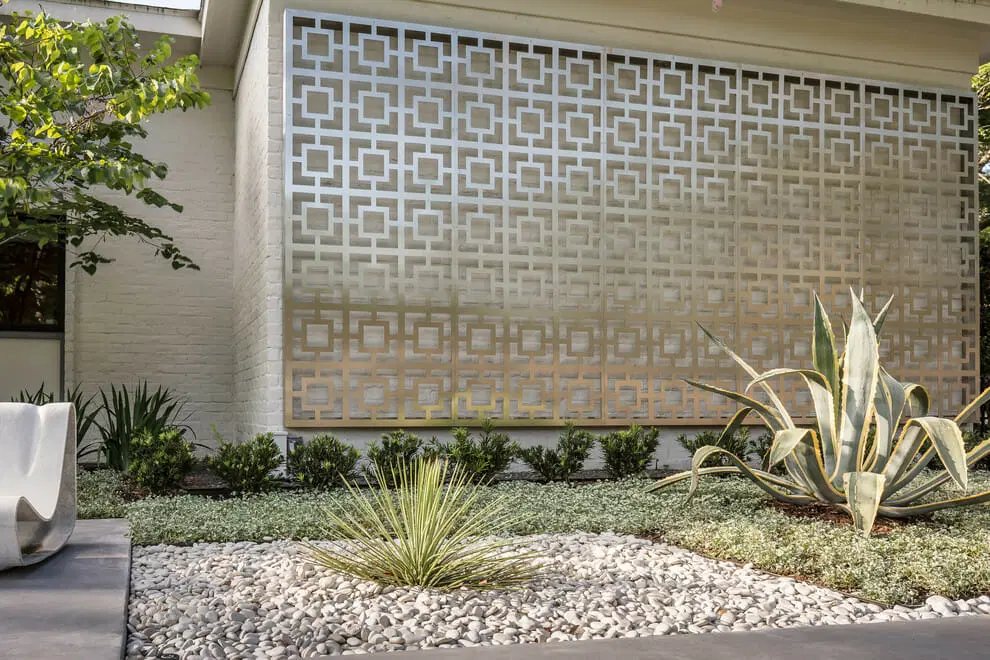
16. White and Green Planting
Combine white rocks with lush green foliage and pops of color for contrast. Avoid small dainty plants.
17. White Landscape Gravel
Cover a large landscape area with bright white gravel instead of thirsty lawn.
18. White Stone Fire Circle
Make a fire circle with white pebble ground cover and stone seating around the edge.
19. White Rock Succulent Display
Show off your succulent collection by displaying pots on a bed of white gravel.
20. Natural White Rock Garden
Keep materials looking natural with asymmetric white boulders and river rock of different sizes.
21. White Borders and Paths
Define curving planting beds and wandering paths using white marble chips.
22. White Pebble Vegetable Garden
Use white pebbles as mulch in a vegetable garden to retain moisture and reduce weeds.
23. White and Black Design
For contrast, combine areas of white rock with black gravel or stone. Bold yet balanced.
24. Rustic Gravel Courtyard
River rock and boulders create a natural rustic feel in this casual courtyard. Add timber seats.
25. White Stone Tree Ring
Highlight specimen trees by surrounding them with a ring of white pebbles or gravel.
26. Modern White Rock Fountain
Make a contemporary water fountain as a focal point within white pebble ground cover.
27. White Stone Undulating Path
Winding paths feel more playful. Lay white gravel in an organic shape.
28. White Boulder Entryway
Welcome visitors with white boulders flanking the entry path or on either side of entry steps.
Design Tips for White Rock Landscapes
Here are useful tips for working with white rocks in your garden:
- Combine different rock sizes and shapes for visual interest
- Allow space between rocks for plants to peek through
- Use white rocks sparingly as accents for maximum impact
- Pair white rocks with contrasting colors like green foliage or gray stone
- Avoid small dainty plants that will get lost. Choose plants with presence.
- White rocks work with all design styles from tropical to Zen to cottage gardens
- To make a space feel larger, use more white rocks towards the front and perimeter
- White rocks light up shady areas but avoid full sun exposure which can cause glare
- Layer white rocks over weed mat to prevent unwanted sprouting in gravel beds
Shopping for White Landscaping Rocks
When buying white rocks, shop around to compare shape, size and price options. Purchase extra to allow for sparse spacing in the design.
Bulk bags are the most economical choice for large areas. For smaller accents, buy bags by weight. Shop at local nurseries and home improvement stores.
Look for rocks without dust as they stay clean and bright for longer after installation. Always check product descriptions as “white” can vary from creamy tones to pale gray.
Installing and Caring for White Rock Landscapes
Follow these tips for installing and maintaining white rocks:
- Clear the area of debris. Use a weed barrier like landscape fabric.
- Shape the ground with rakes. Mound for drainage.
- Spread rocks out to the desired depth. At least 2 inches is best.
- Blend and mix rock sizes as you go for a natural look.
- Use a tamper to compress rocks, followed by a broom to smooth.
- Mist the rocks after installation. This encourages settling.
- Weed weekly at first. It becomes easier as rocks compact.
- Add new rocks occasionally to fill gaps and keep the color

